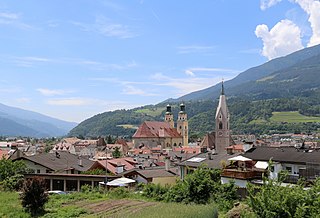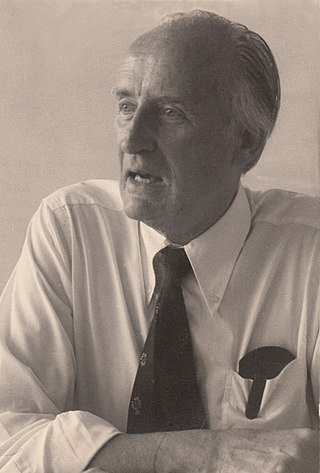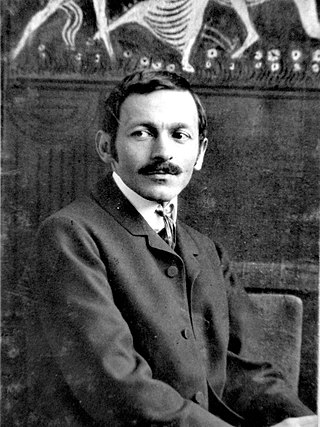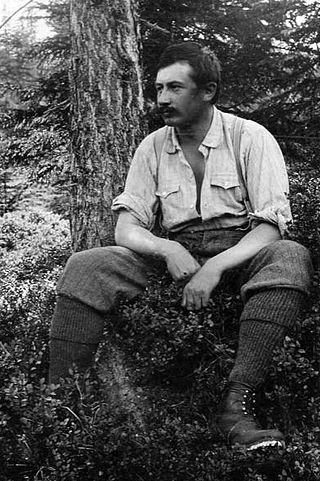Helmut Zobl | |
|---|---|
 Helmut Zobl in 2015 | |
| Born | May 6, 1941 |
| Nationality | Austrian |
| Alma mater | Academy of Fine Arts Vienna |
| Known for | Painting |
Helmut Zobl (born 6 May 1941 at Schwarzach im Pongau, Austria) is an Austrian medallist living in Vienna. [1]
Helmut Zobl | |
|---|---|
 Helmut Zobl in 2015 | |
| Born | May 6, 1941 |
| Nationality | Austrian |
| Alma mater | Academy of Fine Arts Vienna |
| Known for | Painting |
Helmut Zobl (born 6 May 1941 at Schwarzach im Pongau, Austria) is an Austrian medallist living in Vienna. [1]
Helmut Zobl studied at the Academy of Fine Arts Vienna from 1960 to 1965. From 1967 to 1970, he was an Assistant of Ferdinand Welz at the Meisterschule für Medaillenkunst.
Since 1970, Helmut Zobl has been working as a freelance artist coin designer, painter, sculptor etc. He became one of the most important contemporary medallists of Austria. He has designed many Austrian coins and medallions. [2] Since 1971, Zobl has been a member of the Wiener Secession. In 1994, he became a member of Deutsche Gesellschaft für Medaillenkunst. He was awarded with high prizes and honors.

Brixen is a town and commune in South Tyrol, northern Italy, located about 40 kilometres (25 mi) north of Bolzano.

Klosterneuburg, frequently abbreviated to Kloburg by locals, is a town in the Tulln District of the Austrian state of Lower Austria. It has a population of about 27,500. The Stift Klosterneuburg, which was established in 1114 and soon after given to the Augustinians, is of particular historical importance.

The Creditanstalt, full original name k. k. priv. Österreichische Credit-Anstalt für Handel und Gewerbe, was a major Austrian bank, founded in 1855 in Vienna.
Gundula Janowitz is an Austrian lyric soprano singer of operas, oratorios, lieder, and concerts. She is one of the most renowned opera singers of the 20th century and was pre-eminent in the 1960s and 1970s.

Deutsche Vermögensberatung (DVAG), which loosely translates into English as "German wealth advisors", is a company based in Frankfurt, Germany. The DVAG is active in Germany, Austria and Switzerland. Founded in 1975 by Reinfried Pohl, the company is managed by Deutsche Vermögensberatung Holding and is Germany’s largest stand-alone financial services distributor.

Helmut Gröttrup was a German engineer, rocket scientist and inventor of the smart card. During World War II, he worked in the German V-2 rocket program under Wernher von Braun. From 1946 to 1950 he headed a group of 170 German scientists who were forced to work for the Soviet rocketry program under Sergei Korolev. After returning to West Germany in December 1953, he developed data processing systems, contributed to early commercial applications of computer science and coined the German term "Informatik". In 1967 Gröttrup invented the smart card as a "forgery-proof key" for secure identification and access control or storage of a secure key, also including inductive coupling for near-field communication (NFC). From 1970 he headed a start-up division of Giesecke+Devrient for the development of banknote processing systems and machine-readable security features.

Dominik Gross is a German bioethicist and historian of medicine. He is Professor and Director of the Institute of History, Theory and Ethics in Medicine at the RWTH Aachen University, Germany.
Carl Vezerfi-Clemm was a German sculptor, medalist and coin designer. He made commemorative coins issued by the Federal Republic of Germany, medals, sculptures and other creations.

Paul Sturm was a German Art Nouveau sculptor, medallist and designer.

Friedrich Bohl is a former German politician. From 1991 to 1998 he was the chief of the Federal Chancellery and Federal Minister for Special Affairs. He was the member of Fourth Kohl cabinet and Fifth Kohl cabinet. He succeeded Rudolf Seiters on 26 November 1991.
Helmut Karl Otto Beumann was a German historian.

Richard Gisser is an Austrian demographer who held leading positions at his country's statistical office until his retirement. He was also the long-time director, then deputy director, of the Vienna Institute of Demography at the Austrian Academy of Sciences.

Ignatius Taschner, also known as Ignaz Taschner, was a German sculptor, medalist, graphic designer and illustrator.
Werner Resel is a German cellist. From 1987 to 1997 he was chairman of the Vienna Philharmonic.
Eduard Arzt is an Austrian physicist and materials scientist. He is the recipient of the Gottfried Wilhelm Leibniz Prize, the highest research award of the German Research Foundation (DFG), the Acta Metallurgica Award, and the Heyn-Award, the highest award of the German Materials Society (DGM). He is a member of the German Leopoldina Academy of Sciences in Halle, and a corresponding member of the Austrian Academy of Sciences in Vienna. In 2020, Arzt was elected an international member of the US National Academy of Engineering

Sneschana Russewa-Hoyer is a Bulgarian engraver and medallist. She lives in Berlin, Germany.

Helmut Brandstätter is an Austrian politician and former journalist.

Otto Ampferer was an Austrian alpinist and geologist. To explain the complex processes of Orogeny, he developed his "theory of undercurrent" with the idea of a partially plastic deep Earth's crust (asthenosphere). He became – even before Alfred Wegener – the pioneer of the modern view of continental drift.
Hellmut Friedrich Fischmeister was an Austrian metallurgist who was a pioneer in powder metallurgy.